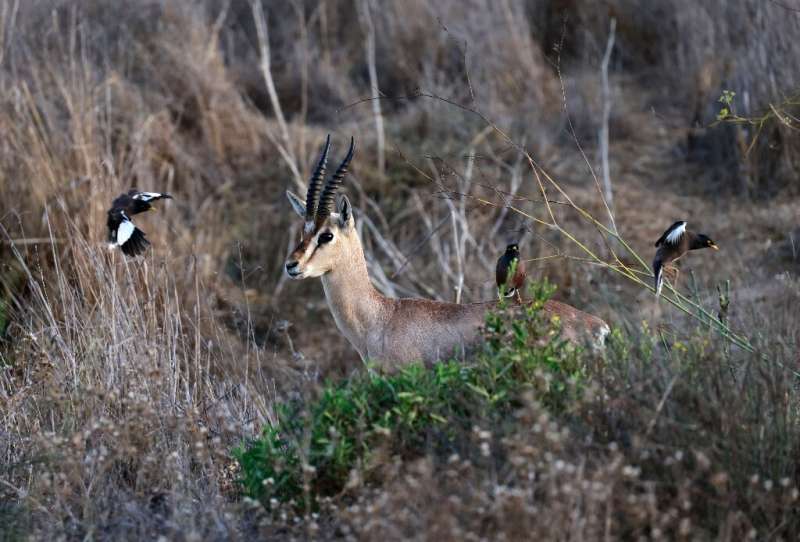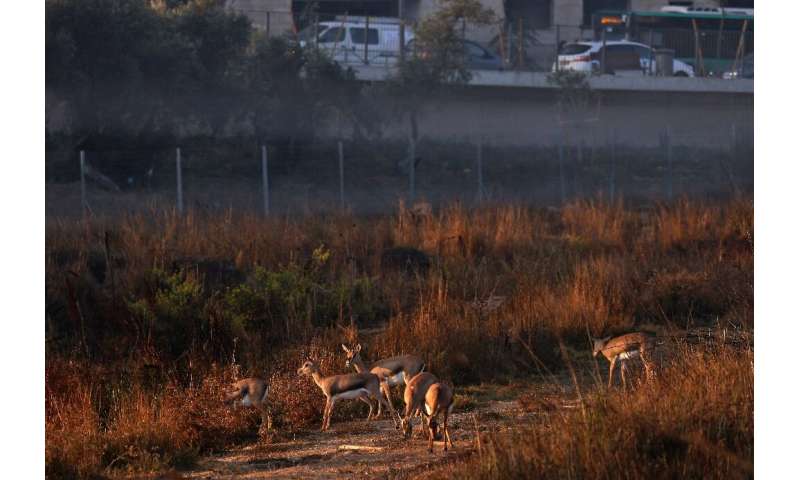
Two female nothern white rhinos graze at the Ol Pejeta Conservancy in Kenya. Rhinos have few predators in the wild due to their size but have been devastated by poaching for their horns (AFP/TONY KARUMBA)
Mon, November 29, 2021
Thirty endangered white rhinos arrived in Rwanda on Monday after a long journey from South Africa in a Boeing 747, conservationists said, hailing it as the largest single transfer of the species ever undertaken.
The majestic animals, which can weigh up to two tonnes, travelled some 3,400 kilometres (2,100 miles) from South Africa's Phinda Private Game Reserve as part of a programme to replenish the species' population, decimated by poaching since the 1970s.
Once plentiful across sub-Saharan Africa, white rhino suffered first from hunting by European settlers, and later a poaching epidemic which largely wiped them out.
The rhinos began their 40-hour journey to the new home in Akagera National Park in eastern Rwanda following months of preparation, said African Parks, a charity headed by Britain's Prince Harry which is involved in the exercise.
"We had to tranquillize them to reduce their stress, which is itself risky, and monitor them," said African Parks' CEO Peter Fearnhead, calling the project a success.
The animals were transported in a chartered Boeing 747 and were placed in two grassy enclosures -- each the size of a football stadium -- after arriving in the park.
Later they will be allowed to roam the expansive park, authorities said.
"This will provide an opportunity for them to grow in a safe environment from South Africa where three are killed per day by poachers," said the park's regional manager Jes Gruner.
Wildlife transfers are not without risks. In 2018, four out of six relocated black rhinos died a few months after arriving in Chad.
The southern white rhino, one of two subspecies of white rhino, is now considered endangered with about 20,000 individuals remaining, according to the World Wildlife Fund (WWF).
It is classified as near-threatened by the International Union for Conservation of Nature (IUCN).
- Breeding programme -
The northern white rhino has all but vanished, with only two females left alive.
Scientists are attempting to save the species from extinction by harvesting eggs from the younger of the two animals, Fatu, and using sperm from two deceased males to create embryos in an unprecedented breeding programme, which is their last chance at survival.
Rwanda, which is positioning itself as a top Big Five safari destination, received five eastern black rhinos in 2019 from the Czech Republic and 17 from South Africa in 2017.
Not a single eastern black rhino has been poached at the Akagera park since their re-introduction in 2017, according to its regional manager Gruner.
Rhinos have few predators in the wild due to their size but have been devastated by poaching for their horns -- used in traditional Chinese medicine.
According to the IUCN, there are around 5,000 black rhinos left in the wild, compared to more than a million in the mid-19th century.
str-ho/amu/tgb

















/cdn.vox-cdn.com/uploads/chorus_image/image/70195282/Venus_NewlyProcessedView.0.jpg)